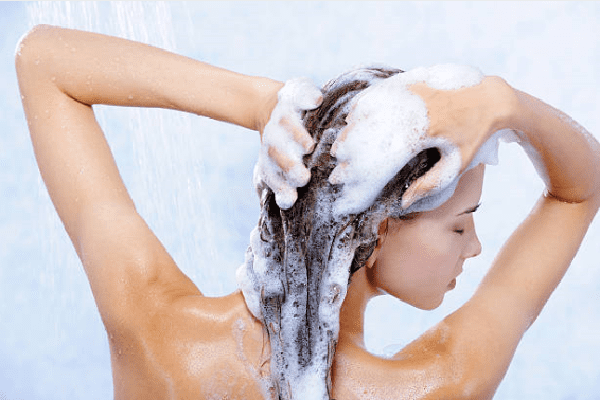Home cosmetology >>>> How to take care of your skin on the head?
How to take care of your skin on the head?

Little attention is paid to the condition of skin on the head, unless problems affect the skin of the face, since all the flaws and unhealthy manifestations in the facial area are instantly striking. But those areas of the skin that are covered with hair also need attention, because everything that happens to the skin in this part of the head is certainly reflected in changes in the appearance of the hair.
Skin on the head in the area of hair growth has, unlike other areas of skin on the head, a special structure: although the layer of subcutaneous fat is much thinner here than in the area of the face, but its subgaleal layer is rather loose, therefore, inflammatory processes (especially pustular) occurring in this area of the skin, have a comfortable environment for development. The sebaceous and sweat glands are quite densely located, and the mouths of the ducts of the sebaceous glands are connected with the hair (the excretory duct of the sebaceous gland flows into the hair follicle in the region of its middle third). Part of the ducts of the sebaceous glands opens directly to the surface of the skin.
Eccrine sweat glands are located on the skin on the head, which are evenly distributed over the entire surface of the skin. They secrete a lubricant for the cells of the stratum corneum, and also regulate heat exchange by excreting sweat. The same glands are able to secrete nitrogen-containing compounds with sweat with poor kidney function, that is, they actually take part in regulating the level of certain substances in the body, like the urinary system.
When the stratum corneum of the skin of other areas is renewed, the dead scales have the opportunity to peel off freely (for example, when rubbed with clothes) and crumble, or wash off with water. But when it comes to the skin on the head, here the dead cells have little chance of being washed off or crumbled, since they linger on the surface of the hair, including at the very roots of the hair, contaminate the surface of the hair, stick together under the action of sebum and attach if not to the very surface of the skin (clogging the ducts of the glands, the mouth of the follicle), then very close to it.
Poor hair washing (without approaching the scalp) will not allow the accumulated pollution to be regularly washed off, which will provoke blockage of follicles, the mouth of sweat or sebaceous glands and create conditions for various kinds of inflammatory processes, prickly heat. Accidental injury (pulled out hair, scratch) and you are the owner of folliculitis, furuncle, carbuncle.
External harmful factors also add problems to the skin on the head:
- Heating batteries, blow-drying hair, heat styling cause excessive dryness of this area of the skin,
- The dusty atmosphere will add dirt to the skin on the head, not just the hair.
- Going outside in the cold without a headgear will do to the what it does to the skin of the hands and face (and don't expect thick hair to prevent this, the days when a person could rely on their hairline as protection against cold - there is no longer an undercoat that provides thermal insulation),
- A hot climate or stuffy atmosphere will provoke increased sweating and sebaceous glands, which will increase the amount of secreted fat,
- Harmful working conditions when working with vapors of chemicals spoil not only the structure of the hair, but also the surface of the skin under them,
- Hair coloring always affects the surface of the skin under them, hairspray - too, and the skin is a little fan of chemicals, so irritation of this kind of substances for the skin can turn into an allergy (this is where the redness on the skin on the head of "unknown origin" comes from),
- Indiscriminateness in the choice of shampoo for washing is also a step towards irritation of the skin on the head, and chronic irritation is an injury, which is fraught with the development of serious skin diseases.
- Daily hairstyles that stretch the hair create tension in the layer of skin on the head, change its blood supply and irritate the nerve endings on the skin, disrupt their work, which is why after wearing tight ponytails, the skin on the head becomes numb.
We take care of the face every day: we wash, wipe with lotions, lubricate with creams (moisturizing, nourishing), cleanse with scrubs. We ignore the skin in the area of hair growth. From time to time it brings us down: it itches, peels, has a greasy look, and thereby spoils the appearance of the head, makes the hair dull and untidy. But the most unpleasant thing that an unkempt skin on the head can pay us back is hair loss.
How to take care of your skin on the head so that it does not create problems in your life?
For skin on the head care you need:
- Correct and regular washing not only of the hair, but also of the skin on the head,
- A thoughtful choice of shampoo or other detergent that does not injure the skin,
- Baths for skin on the head,
- Nourishing and moisturizing masks,
- Hair coloring with natural dyes,
- Hairstyles that give rest to the skin on the head,
- Massage for skin on the head.

Read

Read



























